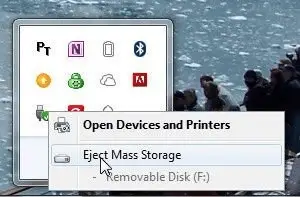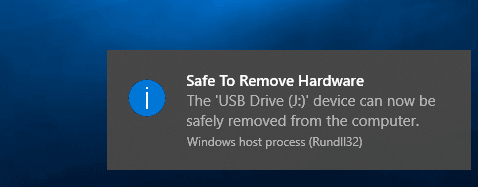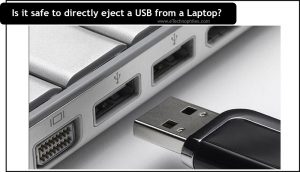Last updated on April 5th, 2024 at 10:27 am
We are all familiar with an icon named “Safely Remove Hardware” in the taskbar of our system. Its purpose is to remove the USB drive safely without causing an issue to the computer. But is it truly helpful? Is it a mandatory method to ensure safety while removing the drive? Are there any issues that harm our system or drive if we do not use that method? Let us analyze this in detail.
Table of Contents
Is it safe to remove a USB Drive without ejecting it?
No, because the random removal of the drive can cause several issues that affect the files in both devices (the system and even the drive). If it results in the loss of files, it’s nearly impossible to retrieve them. So why take a risk?
It is better to spend a few seconds enabling “Safely Remove Hardware” and ejecting the external drives.
Still, there are some extra facts regarding this piece of information. Let’s go through it.
What does “Safely Remove Hardware” actually mean to the computer?
Inserting an external drive into the computer is mostly for file transfer. So once the drive is inserted, the computer prepares itself for the same.
The computer initially powers the drive. If you have antivirus software installed, the computer will check the drive for any malware. If all seems good, the computer starts reading and writing files per the user’s command. The system makes changes to the metadata of the files in batches.

Once the “Safely Remove Hardware” is selected, the system becomes aware that the drive will be removed soon. It will then finish writing the files (if there is anything pending). If any transfer is ongoing while initiating the command, the system informs about it. Hence all the file transfers remain safe.

Once all the activities are completed, it’s time for the system to say goodbye, remove the power to the drive and disconnect it.
Why is it advised to use safe ejection of hardware from the computer?
Most of us do not bother to eject the external drive safe from the computer. But there might be some unlucky situations that we may face due to it. Here are some reasons why safely removing hardware is important.
- Data Loss: Abrupt removal of external drives from the system causes data loss. While we remove the USB during the file transfer, the computer may erase the transferred data since it does not find the transfer location.
- Data Corruption: Data corruption is another aftereffect of the sudden removal of external drives. It is due to write caching. When the computer finds a file ready to execute, it first caches this file until other transfers are completed. Once the existing transfers are over, the system retrieves them from the cache and does the transfer. So if the file exists in the cache while we remove the external drive abruptly, it corrupts the data.
- Damage to Logical File System: The internal drive information is carried as three cells; Single Layer Cell (SLC), Multi-Layer Cell (MLC), and Triple Layer Cell (TLC). Any data stored in the drive is carried in these cells too. The abrupt removing the external drive damages the cells as well as the information stored in them. Once lost, we will need data recovery tools to get them back.
Quick removal in Windows OS
Although it is highly preferred to use safe drive ejection, now it is not necessary for Windows Operating System. Windows OS has a feature called Quick Removal that keeps the external drive in a state to be ejected at any time. It prevents data corruption, data loss, or any other harm that may happen to either device due to abrupt removal.
Quick Removal is set as the default feature so we need not fetch it specifically while using the external drive. The system will not keep the cache information for file transfer.
Conclusion
It is always a good idea to do safe ejection of USB ports. Because the system does not allow the sudden state change of an external disk. If such an abrupt change happens, it may cause data corruption, data loss, or even severe system malfunctions.
But if you use Windows 10 OS, you don’t need to bother about all these cases since it is enabled with Quick Removal by default. In any other cases, keep your data safe by enabling Safe Removal of USBs.
FAQs
What happens if you remove the USB without ejecting it?
Removing a USB without ejecting may cause data corruption or loss as it interrupts ongoing writing processes. Safely ejecting ensures all data is written and the file system is properly closed, preventing errors. Always eject USB drives before physically removing them to avoid potential data damage.
Is it safe to remove the USB if a computer is off?
Yes, it’s safe to remove a USB drive if the computer is off, as there are no ongoing data transfer processes that could be interrupted.
What happens if you don’t eject a drive?
Without ejecting a drive, data corruption or loss may occur due to interrupted processes.
